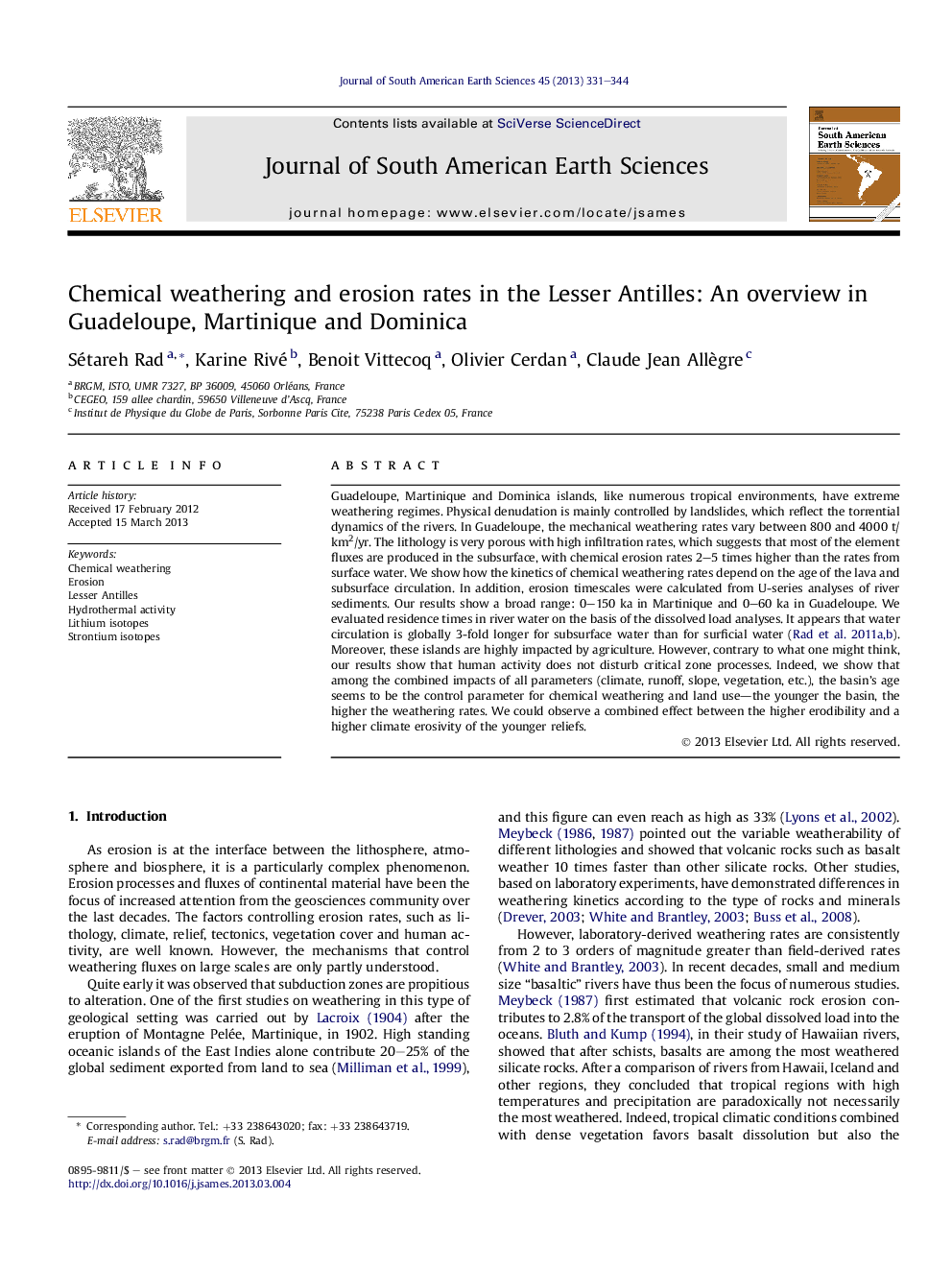| کد مقاله | کد نشریه | سال انتشار | مقاله انگلیسی | نسخه تمام متن |
|---|---|---|---|---|
| 4682351 | 1635164 | 2013 | 14 صفحه PDF | دانلود رایگان |
• We explain chemical weathering processes in the Lesser Antilles by using new isotopic tools such as Li isotopes.
• We use new isotopic tools to calculate timescales of erosion.
• We summarize and compare Sr isotopic data in volcanic rivers.
• We combine geochemistry approach with geomorphological approach by studying land use.
• We do an intercomparison of chemical weathering rates in volcanic provinces.
Guadeloupe, Martinique and Dominica islands, like numerous tropical environments, have extreme weathering regimes. Physical denudation is mainly controlled by landslides, which reflect the torrential dynamics of the rivers. In Guadeloupe, the mechanical weathering rates vary between 800 and 4000 t/km2/yr. The lithology is very porous with high infiltration rates, which suggests that most of the element fluxes are produced in the subsurface, with chemical erosion rates 2–5 times higher than the rates from surface water. We show how the kinetics of chemical weathering rates depend on the age of the lava and subsurface circulation. In addition, erosion timescales were calculated from U-series analyses of river sediments. Our results show a broad range: 0–150 ka in Martinique and 0–60 ka in Guadeloupe. We evaluated residence times in river water on the basis of the dissolved load analyses. It appears that water circulation is globally 3-fold longer for subsurface water than for surficial water (Rad et al., 2011a and Rad et al., 2011b). Moreover, these islands are highly impacted by agriculture. However, contrary to what one might think, our results show that human activity does not disturb critical zone processes. Indeed, we show that among the combined impacts of all parameters (climate, runoff, slope, vegetation, etc.), the basin's age seems to be the control parameter for chemical weathering and land use—the younger the basin, the higher the weathering rates. We could observe a combined effect between the higher erodibility and a higher climate erosivity of the younger reliefs.
Journal: Journal of South American Earth Sciences - Volume 45, August 2013, Pages 331–344
